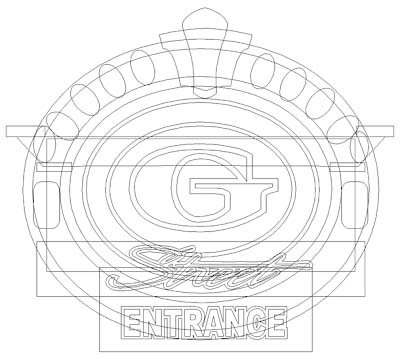As part of the design process for our Fox & Hounds Pub project, we created a few samples. These pieces also helped to ensure the contractor and trades were on the same page and knew what to expect from us. Our first sample was a fox medallion.
My father created the vectors for the barrel in EnRoute and then used the jigsaw tool (pictured below) to create the staves of the barrel.
He created the outer ring and the barrel top first. (As usual) he used the render button to double check his work.
Then dad selected the outer staves of the barrel and built each one separately (with slight variations in height). As usual, he created each one as a separate relief.
Then he imported the sandblasted wood grain bitmap (from our Texture Magic: Classic Collection).
Since bitmaps can't be rotated inside of EnRoute, dad selected everything else and rotated the reliefs to apply the textures to the barrel staves. At this point everything was merged together for form one relief.
To create the fox, dad used a stock STL file. He resized and positioned it before merging it to the barrel top he had created previously.
And just like that it, was ready to tool path and send off to the CNC router.




























